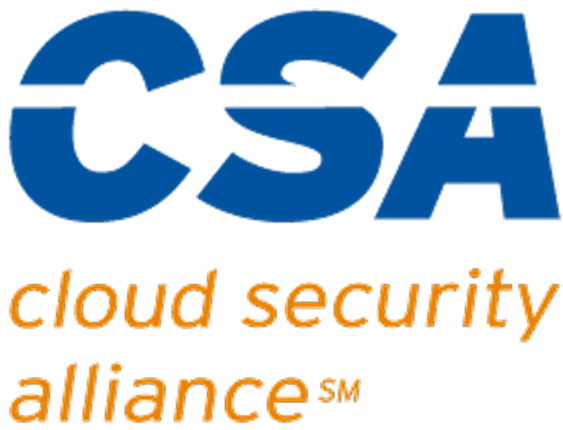Introduction
Many business owners don’t realize that their IT infrastructure can have hidden costs that place a burden on the company. These hidden costs can include unattributed expenses related to maintaining an IT staff, maintaining and upgrading hardware and software, and the cost of repairing or replacing malfunctioning equipment. Many companies also overlook the cost of employee training, which can be significant for businesses that rely heavily on technology. In addition, businesses that use outdated technology may find themselves at a disadvantage in today’s competitive marketplace, expending human and financial capital to cope with obsolete systems and suffering opportunity costs as a result.
Hidden business IT costs can significantly impact a company’s bottom line. In order to make informed decisions about their IT investments, businesses need to understand all of the expenses associated with running their IT department. For companies that don’t understand the full extent of their IT spending, hidden costs can add up without businesses even noticing. Hidden business IT costs can be challenging to identify. However, it is possible to estimate these costs by taking a holistic view of the organization and its technology needs. Understanding how different systems work together and how they support the business goals makes it possible to make informed decisions about where best to invest IT resources.
Fortunately, there are several ways small businesses can reduce their IT expenses. One way is to outsource some or all of their IT needs to a third-party provider. This can save money by allowing businesses to share the cost of hardware and software licenses and freeing up employees’ time to focus on more critical tasks. By not taking the time to understand the costs and benefits of different technologies and methods, they’re missing out on opportunities to cut costs and improve efficiency.
Identify and quantify hidden IT costs
Information technology is essential for businesses of all sizes. However, the actual cost of IT can be difficult to quantify, as many things that impact the total cost of IT may not be immediately apparent. To identify and quantify hidden business IT costs, it is vital to understand the different components of IT and how they impact a business.
The three main components of IT are infrastructure, applications, and data. Infrastructure is the hardware and software that supports business operations, including servers and storage (physical and virtual), networks, and operating systems. Applications are the software that enables employees to do their jobs, such as email programs and word processors. Data is the information businesses use to operate, including customer data, financial data, and product data. Each of these components can have hidden costs for businesses.
Hidden costs of IT infrastructure
Infrastructure can be expensive to operate and maintain. Businesses are often focused on upfront costs and may overlook other expenses that can add up over time. These untracked items can include energy consumption, maintenance and repair, and loss and replacement expenses. To identify and quantify these hidden costs, businesses need to clearly understand their IT infrastructure and how it is used, along with all associated costs pertaining to their model. An example consideration: to save money, companies often buy less expensive hardware and software, but this can potentially impact productivity and lead to more significant operating expenses which could potentially offset savings and problems if not managed efficiently.
Once the hidden costs have been identified, businesses can begin to develop strategies for reducing or eliminating them. One way to do this is by using more efficient technologies that require less energy to operate. Another option is outsourcing some infrastructure or maintenance and repair work to outside providers and specialists who can keep costs down. And finally, businesses should always be prepared for the unexpected by having a budget for replacement parts and services.
Hidden costs of software and applications
For businesses to remain competitive in the current economy, they need to invest in state-of-the-art software and applications. However, many business owners don’t realize that these investments can come with hidden costs. For example, while a business may set out to save money on labor costs by automating specific tasks with IT software, it may spend more time and money on the software rollout and maintenance than expected. Additionally, while certain applications may make it easier for employees to do their jobs, they can also be costly in terms of data storage and processing power requirements, forcing expensive upgrades to existing infrastructure. Thus, before making any decisions about IT software and applications, business owners should carefully consider all the associated costs.
Examine your current infrastructure and operations. What kind of software and hardware do you use? What are your maintenance and licensing fees? How many employees do you have? Hidden costs can include the cost of extra software licenses, increased security measures, and lost productivity due to system outages or data breaches. By understanding these costs and taking action to manage them, businesses can save money and improve their overall efficiency.
Hidden costs of business data
Businesses of all sizes are collecting and managing more data than ever before. This increase in data can lead to a corresponding increase in unexpected expenses. The acquisition and management of business data can be expensive and time-consuming. It can also be challenging to determine which data is essential versus that which is merely consuming time and energy. As a result, many businesses are not taking full advantage of the benefits of their data or may find themselves drowning in a sea of data that is far too cumbersome to manage.
Look at your company’s data usage. How much information do you generate and store? How much of it is mission-critical? Are you collecting, managing, and storing large quantities of data that are not producing returns via insights or statistics? Every bit of data has a cost associated with it. By understanding your company’s data use, you can identify potential areas where you can gain efficiencies and save money.
Reducing or eliminating hidden IT costs
Hidden IT costs can add up, but there are ways to reduce or eliminate them. Here are a few tips:
Audit your business IT systems regularly
Business IT systems can become bloated over time. It’s crucial to audit your systems regularly and identify any redundant or outdated software or systems. This can save money and improve efficiency. With a firm understanding of the company’s processes, it should be apparent what tools are used and for what purpose, making it easy to identify any redundant or outdated systems. Evaluate the benefits of removing or updating a system, and if the numbers pencil out, implement a plan to make the change.
Negotiate better deals
Many companies are willing to discount hardware, software, and services if you agree to purchase in bulk or sign a long-term contract. When it comes to getting the best deals on software and hardware, it can be helpful to know how to negotiate. By understanding what your vendors want and what they are willing to give you, you can get better deals on the products and services you need. Come to the negotiation prepared with a proposal outlining what you are looking for. This doesn’t have to be a final agreement – just a negotiation starting point. Be willing to compromise on some points to get what you want.
Be smart about technology use
Technology is a wonderful thing, and it can help us be more efficient and productive in our work. However, it’s important to be smart about how we use technology in our businesses. For example, don’t keep an unnecessarily large server farm just because you think your company might need it someday. Only purchase the hardware you need and configure it for optimal efficiency. Make sure all your technology is up-to-date and properly patched. This includes your computers, routers, and any other devices connected to your network. Weigh the relative merits of owning versus renting and outsourcing versus doing it in-house to choose the most cost-effective path.
Help your staff work effectively
In order to keep expenses low and maintain a healthy bottom line, it is essential for business owners and managers to ensure that their employees are using business technology in the most effective way for accomplishing their tasks. There are many ways to save money and even find profitability in the workplace. Educate your employees on effectively using tools and systems so that your business gets the maximal return on your investment. By educating employees on the most efficient strategies, businesses can dramatically reduce their expenditures.
Conclusion
Every business has hidden IT costs that can be reduced through careful auditing and analysis. According to a recent study, the average company spends at least 10 percent of its IT budget on unnecessary or redundant costs. That waste can translate into thousands of dollars annually, even for small businesses. Hidden costs can often be reduced by carefully looking at your IT infrastructure and making some simple changes. Reducing waste can improve efficiency and save companies money. By auditing your IT, you can find ways to cut costs and improve your bottom line.




